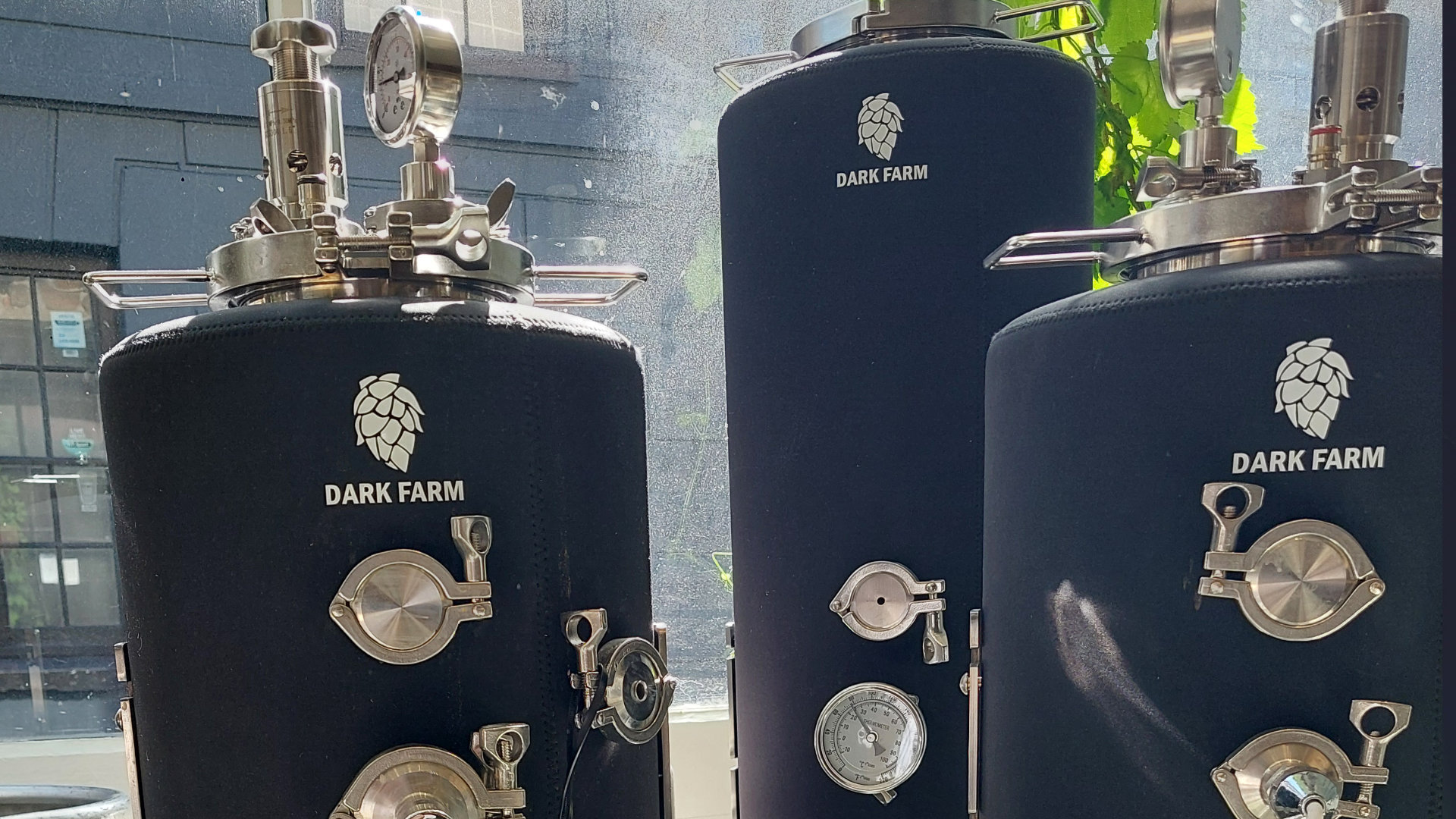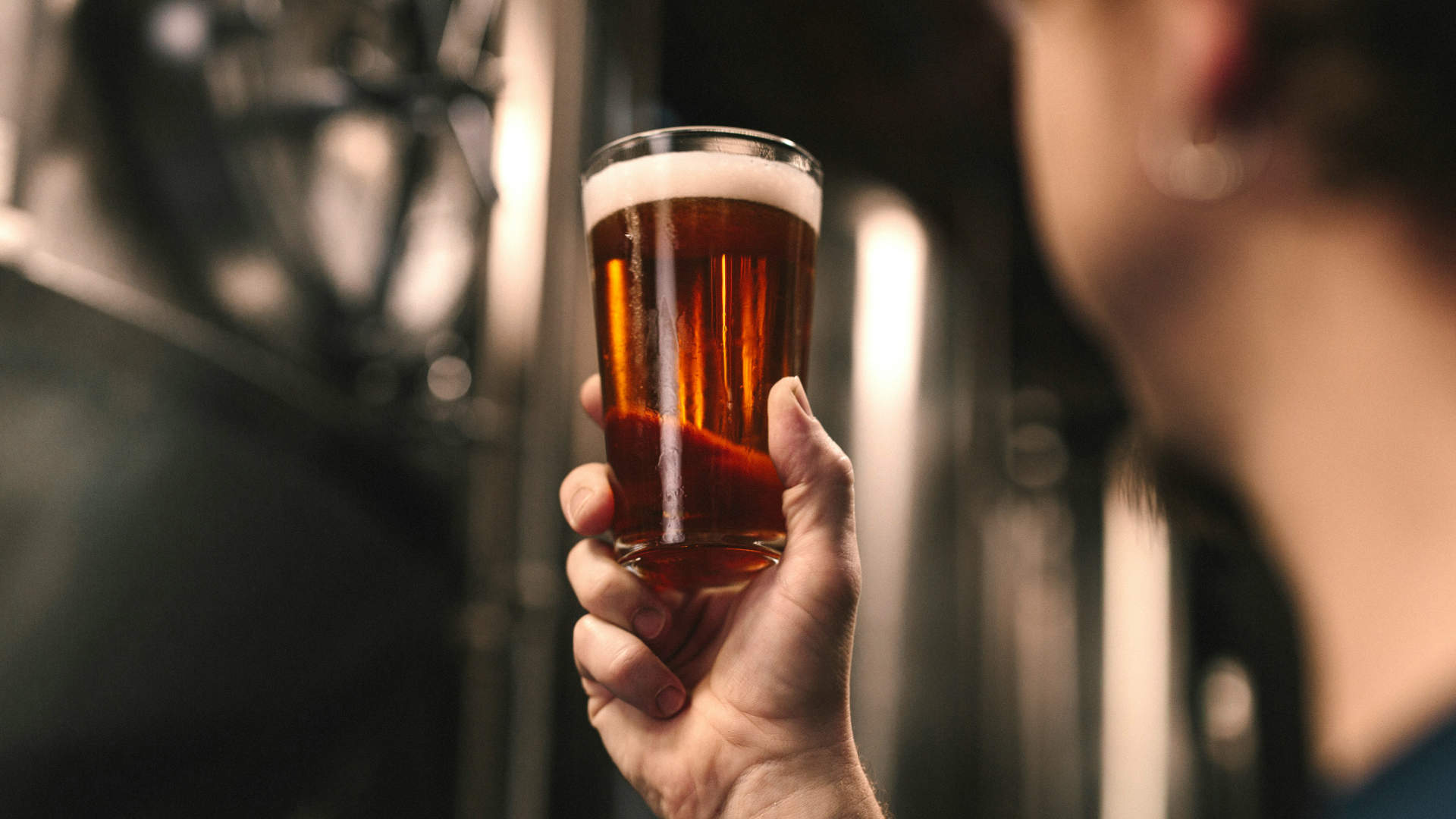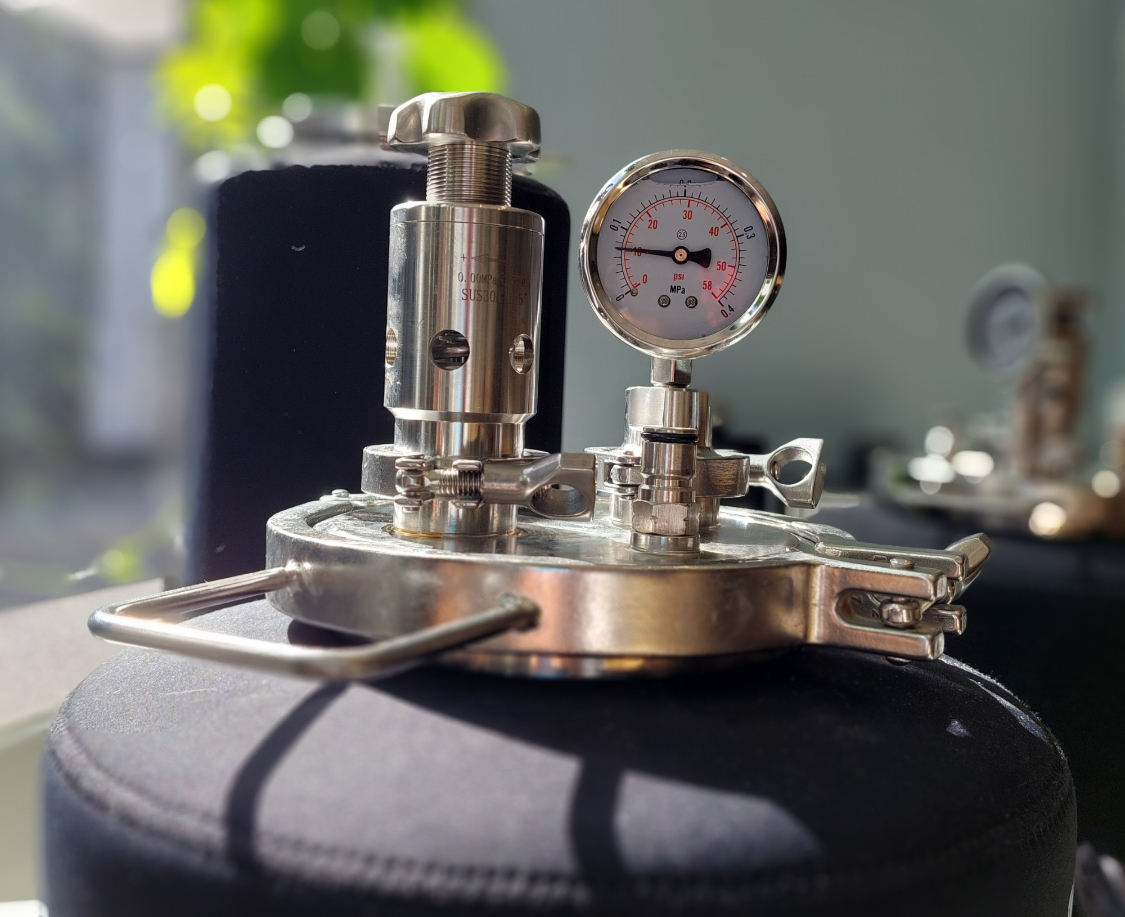How do you serve your beer? While you can of course simply pour your brew into a glass from a bottle or can, bringing gas into the equation can elevate your brew. But how do you go about it? Gareth Davies tells us how.
There are a number of ways to introduce gases to your homebrew. The easiest and most achievable is using kegs, a CO2 adjustable valve and gas bottle. There are a growing number of suppliers offering bottles of gas to homebrewers. The upfront cost is a little more, but this usually includes the deposit for the bottle so any replacement will cost lower. The size ranges from 10L upwards, and costs start from around £50 for replacements, plus the bottle deposit if it’s your first order.Â
Getting a good quality CO2 valve is worth the extra few pounds. There is a lot of pressure inside a gas bottle so the last thing you want is a leak; you could find that a cheaper system becomes a little expensive in the long run if your connection or valves are weak and leaking.Â
Then comes the decision of which gas(es) to use in your beer dispensing system. Interestingly, there are more than you might think. The choice can greatly influence the taste, aroma, carbonation, and mouthfeel of the brew, so let’s delve into the different types of gas mixtures commonly used in beer service, highlighting their benefits, associated beer styles, and their effects on carbonation and mouthfeel.
Carbon Dioxide (CO2)
Carbon dioxide is the most popular gas used in beer dispensing systems. Its benefits include simplicity, affordability and the ability to provide precise carbonation control. CO2 is an essential component for carbonating all styles of beer, and its effervescence adds a lively mouthfeel.
Associated Beer Styles: CO2 is suitable for a wide range of beer styles, such as Lagers, Ales, Stouts, and IPAs. It’s especially good for beers that require a moderate to high level of carbonation.Â
Carbonation and Mouthfeel: CO2 produces fine bubbles resulting in a crisp, refreshing mouthfeel, enhancing the overall drinking experience. Particularly well-suited for lighter-bodied beers and those with delicate aromas.
Nitrogen (N2)Â
Nitrogen is an inert gas that differs from carbon dioxide in its solubility characteristics and resulting mouthfeel. This gas is less soluble than CO2, imparting a creamier texture to beer and a dense, cascading effect when poured. It also has a smaller molecular size than C02, which creates a tighter foam, again adding smoothness to the experience.
Associated Beer Styles: Nitrogen gas mixtures are commonly used in styles like Stouts, Porters and Irish Red Ales. These beers really benefit from a smooth, velvety mouthfeel.
Carbonation and Mouthfeel: Nitrogen-infused beers have lower carbonation levels compared to CO2-driven beers. The resulting creamy texture creates a richer mouthfeel with a more persistent head and smoother finish.
Mixed Gas (CO2 and N2)Â
Mixed gas systems blend carbon dioxide and nitrogen to harness the benefits of both gases. Typically, a higher percentage of nitrogen is used to achieve a balanced flavour and mouthfeel.
Associated Beer Styles: Mixed gas is a great choice for serving nitrogenated versions of lighter styles, such as Cream Ales, Blonde Ales and Wheat Beers. It adds a touch of the creaminess of nitrogen while still maintaining a refreshing character.
Carbonation and Mouthfeel: The reduced carbon dioxide levels in mixed gas systems lead to a softer carbonation and a smoother mouthfeel. However, the presence of CO2 still provides some crispness, giving the beer a balanced texture.
Blend Options
CO2 DOMINANT WITH NITRO BLEND (70/30)Â
This mixture consists of 70% carbon dioxide and 30% nitrogen. It strikes a balance between the effervescence of CO2 and the smooth texture provided by nitrogen.
Associated Beer Styles: Irish Dry Stout e.g. Guinness Draught. This mix elevates the traditional smooth and creamy mouthfeel of Stout, while maintaining a sufficient level of carbonation.
NITRO DOMINANT WITH CO2 BLEND (30/70)Â
With a higher percentage of nitrogen, this mixture enhances creaminess and texture while still incorporating the desired levels of carbonation.
Associated Beer Styles: Milk Stout e.g. Left Hand Brewing Milk StoutÂ
Reason: A nitro dominant with CO2 blend delivers a rich and smooth mouthfeel, allowing the roasted malts and lactose sweetness in the Milk Stout to shine.
Carbon Dioxide and Argon (CO2/Ar)
Adding argon to CO2 for beer dispensing systems offers advantages when preserving the beer’s quality over an extended period, as argon is inert and does not react with the beer.
Associated Beer Styles: CO2/Ar gas mixtures are ideal for beers that benefit from minimal oxygen exposure, such as hop-forward styles like IPAs or any beer susceptible to oxidization.
Carbonation and Mouthfeel: The addition of argon does not significantly impact carbonation levels or mouthfeel, but it helps maintain the beer’s freshness by reducing the risk of oxidation.
As you can see, each gas mixture adds its own unique characteristics to the beer, be that the effervescence of carbon dioxide, the creamy texture of nitrogen, the balanced experience of mixed gas, or the long-term preservation with CO2/Ar. All create a more interesting beer drinking experience. If you can, test some out for yourself with your homebrew. I find it helpful to do a sample test of the same brew with the gas and without, to compare the different characteristics.




